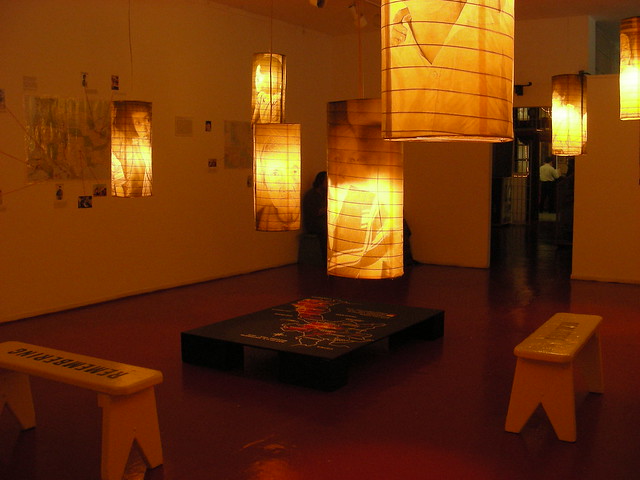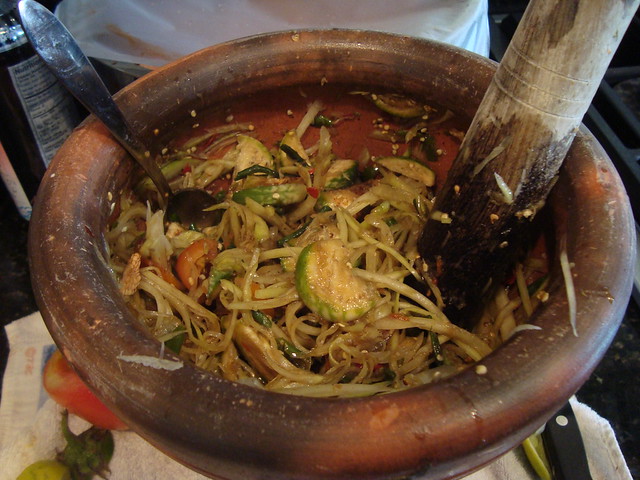Lao tradition is filled with a variety of superstitions, and with over 160 different ethnic groups there are likely thousands of prohibitions one could run afoul of.
A number of these influenced the direction DEMONSTRA took, but it would be almost impossible to include them all. Still, as we did with the beginning guide to phi and other entities, we can try to collect more of them together in one place so that we have more of an understanding of our rich traditions.
A special hat tip to Ketmani Kouanchao, Kelly Bornt Phoninsan, Mattie Do, Chanida Phaengdara Potter, Saengmany Ratsabout, Nor Sanavongsay, Theek Smith, and Saymoukda Vongsay for additional research and a few laughs along the way gathering this all together. So here we go:
One common one is the belief that if you step over someone older than you, bad luck will arrive. Or that women should never ride on top of a bus above male passengers. Lao architects insist stairs must always be odd numbered.
You'll find elders who tell you not to point at the rainbow or you will lose a finger. This becomes interesting because the Nak are connected to rainbows, per myth, so I wonder if there's a connection there. There seems to be a growing belief that if you eat snake by the Mekong, you inviting death, particularly by "drowning." Most likely you offended a Nak, who would also be inclined to do you in if you're partying and frolicking in their clean and tranquil waters.
But let's get to the good stuff. There are numerous superstitions connected to phi and other denizens of the spirit realm, especially at night. Here are a few that people have discussed.
If you see your child is talking to someone who isn't there, you should set food out and show respect if you know what's good for you.
Don't whistle at night or you summon phi and other spirits, especially out in the jungles. Also, don't sharpen a blade at night, or a phi will visit you in your dreams. When dogs howl at night, they see a phi. If you put the tears of a dog in your eye, you will see phi, too.
Don't play hide and seek at night, because phi will hide you from human sight. Some accounts say that they will have a price for 'helping' you out. Interestingly, owl hoots are an omen of death for someone close to the person listening.
If you eat by yourself at night while it's raining, a VERY specific type of phi will come. I won't name it here, but it's the one everyone really hates, who's always going on about how huuuuuuuungry they are.....
You don't eat pumpkin or pumpkin seeds at a funeral, or the deceased will get up and eat them with you. The accounts are unclear how many times this has happened in the past, but it has happened enough that it's now frowned upon.
Never look between your legs or you might see a phi behind you.
If you comment too loudly about something you spot on the road, it will follow you home. And if you hear your name being called and can't find where it's coming from, you do NOT want to answer.
A significant number of superstitions are very specific about how you should sleep. You shouldn't sleep in a big bed with unused pillows, or the phi swing by to make themselves at home and use the pillows and space you aren't. Further, if you put your hands on your chest at night as sleeping you're inviting phi to enter into you.Supposedly, sleeping with a knife under the bed will keep many bad spirits and nightmares away.
If you dream of touching poop, money is coming soon.If you dream that someone asks to come live with you, you're pregnant. If you're dreaming of a snake (possibly a Nak) this often means a man really likes you, possibly a future husband. If you have a nightmare, you're advised to go to the bathroom, whisper it to your poop, then flush it away with the aid of the Phi Kee.
Back in the waking world, if your foot itches, you need to kick someone's ass.It's ok to compare kids to cute dogs, but not to monkeys in many families.
In the kitchen, a number of taboos have been passed on from generation to generation. For example, Soaking sticky rice too long until it has turned blood red is bad luck. And it could make you ill. Also, you don't sing in the kitchen or you will marry an elder. If you don't cover your thip khow sticky rice container, you won't find a spouse. Or you might get divorced.
Never step on, or sit on a bag of rice. It offends the spirits and brings bad luck. Don't sleep after eating or you'll become a 'snake.'
You shouldn't wash dishes at night because you'll wash away your luck and money.If you don't wash the dishes properly, you'll get ugly kids. Young girls are encouraged to wash dishes for beauty. Also known as the oldest trick in the book.
Don't eat out of the pot or else you will have a hard time giving birth. Which leads us to a few of superstitions involving babies.
Never say anything bad about other people's children while pregnant or it will manifest in your own child.When a baby smiles at you, you might lose hair.Don't show a baby their reflection or their teeth won't come in. It is also said that if your newborn pees on you in the first few days, they will love you all of their life. On the other hand, touching a baby's cheeks will cause them to be fussy over their next meal.
An interesting number of beliefs are connected to hair. Cutting your hair on your birthday shortens your lifespan.Cutting your hair in the middle of the week is bad luck. If you cut your hair at night, you will shorten your parents lives. (So, in short, never cut your hair on your birthday midweek at night!) Finally, after you cut your hair, burn it or someone can use it to cast spells on you.
Lao custom says you shouldn't play with your shadow, or your shadow will choke you when it gets the chance. This may explain why you don't often see Lao shadow puppetry.
Don't try on wedding outfits for fun or you'll never get married for real. Related to this, you don't want to be a bridesmaid too many times either for the same reason.
Somewhat randomly, don't look at stray dogs rutting, or you will get pink eye.
For the photographers among us, if you take a picture of 3 people at a time, if they're close or related, they will wind up moving far away from each other.Don't take pictures at night outside or you will get 'things' you don't want...
So, that's a start that hopefully encompasses a good variety of options for writers to consider for possible stories, whether horror, fantasy, or historical. What are some of the traditions and superstitions that you know?










.JPG)

.JPG)
.JPG)
.JPG)
.JPG)
.JPG)
.JPG)
.JPG)
.JPG)
.JPG)































